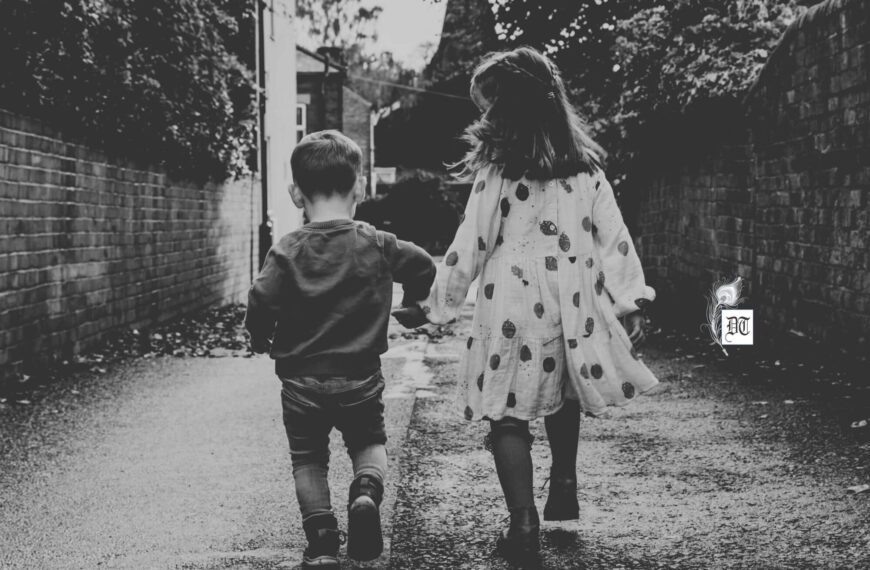Twenty five girls of age group 7 to 13 years from ten National Child Labour Project schools of North-24- pgs were studied. It was found that 72% girls are from Muslim community. Over populated family, poverty, lack of awareness of the parents, absence of father and/or mother and presence of alcoholic/ sick/ injured/ physically challenged parent are the reasons for the girls to join labour force. In overpopulated family higher the birth order of the girl, greater the chance of becoming child labour was observed. More than half (52%) girl children are engaged in domestic labour followed by homebased zari work, rag picking, jewellery-making, baby sitting etc. They can attend school regularly if the working time doesn’t interfere with schooling. All girls want to be mainstreamed and agree that education can provide better socio-economic status. 36% want to continue education with work predominated by 64% who wants only schooling. This article explains the present scenario of girl-child labour and their participation in work as well as in schools under National Child Labour Project in North-24 Parganas. Case study research methodology was employed to analyse and interpret the collected data. An in-depth document on the subject, by Madhuparna and Dr. Debjani, as special report on International Women’s Day, exclusively in Different Truths.
It is really shameful that 11% of total Indian workforce is child labour. According to census report, 2011, India has altogether 1.26 crores child labour whose age ranges between 5 to 14 years among which 67 lakhs are male and 58 lakhs are female 1. The Government of India initiated the National Child Labour Project (NCLP) Scheme, in 1988, to identify working children through child labour survey, to withdraw them from work and to put into the special schools and finally to enable them to join mainstream education system. In West Bengal, NCLP started functioning, in 1995, with 246 special schools covering six districts namely Burdwan, Uttar Dinajpur, Dakshin Dinajpur, North-24 Parganas, South-24 Parganas and undivided Midnapore 2. Presently forty such schools are there in North-24 pgs. Some NGOs of west Bengal which are also working to elimnate child labour are Karimpur Social Welfare Society, Nadia; Unemployed Young Workers Society, Burdwan ; Bagmari Youth progressive Association, Kolkata; Bhagra Diamond Club, Burdwan; Tegganj Children Welfare Organisation, Burdwan ; Ikhupatrika Social Welfare Organisation, Midnapore ; Jan Siksha Prachar Kendra, Kolkata; Society for Educational and Environmental Development (SEED), Howrah etc.3
Qualitative case study design was taken to collect data from twenty five girl child of age group 7 to 13 from ten NCLP schools of North-24- pgs namely ‘Surendra Kumar Child Labour Welfare School’, Rahara; ‘G.C.Road, Ward No.18 Child Labour School’, Titagarh; ‘Azad Hind Nagar Child Labour Welfare School’, Agarpara; ‘Dhrubatara Sporting Club Child Labour School’, Titagarh; ‘Mujaffar Ahamed Memorial Child Labour School’, Titagarh; ‘Belgharia Child Labour Welfare School’, Belgharia; ‘23 No. Ward Child Labour School’, Shyamnagar; ‘Golghar Child Labour School’, Jagaddal; ‘Ariadaha Child Labour School’, Kamarhati and ‘Kamarhati Child Labour Welfare School’, Kamarhati.
Out of total 500 seats in these schools, 226 are for girl-children, who are either still combining work with schooling or withdrawn from labour force. Among the sample of twenty five girl students, eighteen are from Muslim community dominating their Hindu counterpart.
The main push factors for the children towards labour force are over populated family, poverty, lack of awareness of the parents, absence of father and/or mother and presence of alcoholic/ sick/ injured/ physically challenged parent4.
Overpopulated family is the main cause behind child labour5. Domestic household chores and child care are the paid or unpaid responsibility of the girl6. Birth order of the girl is very important in this aspect. The study has observed that the frequency of girl-child labour decreases with their birth order.
This study has revealed that most of the girl-children are part time labour of non-hazardous work. In all the cases, family influenced them to take that work. They are mainly engaged in domestic labour followed by home based zari work, rag picking, jewellery making, baby sitting, etc.
Working Hour and Attendance in NCLP School
Educational deprivation plays a key role in generating child labour [7]. NCLP schools bridge the knowledge gap of the children before mainstreaming. For domestic labours, who are used to clean floor and wash utensils in other household, the working hour in a day varies between 1 to 3 hours. In case of other home based works, the span is four to eight hours. Only four girls are found as withdrawn from labour force. Otherwise all twenty one girls are combining work and school as the timing doesn’t overlap each other. Like other research works, it is evident that some health problems cause irregular attendance but works within threshold level do not interfere with education8.
Interest in Mainstreaming
After completing class IV in NCLP schools these girls have the scope to be mainstreamed. Out of twenty five girls, nine have reported that they want to continue work and education simultaneously whereas rest sixteen students want to concentrate in only education (Fig5).
All of them think that education can provide them better job opportunity that will improve their present status. So, no one opted for only work after completing NCLP School. But it is observed that most of them do not continue education after mainstreaming due to marriage or return to labour force.
Conclusion
Child labour deprives children of their childhood, interferes with their ability to attend regular school, and it is mentally, physically, socially & morally dangerous [9]. So, government and NGOs should arrange intensive awareness generation programme for the family of those girls to eliminate gender discrimination. Ensuring the girls’ right to full time quality education is indispensable for a better future. Regular monitoring after mainstreaming is also needed to prevent early marriage or return to workforce that obliges them to leave school.
References
1. Share of Child Labour in India’s Growth Story. (n.d.). Retrieved on 16 th December, 2015, from http://childlineindia.org.in/pdf/Share-of- Child-Labour- in-India.pdf
2. Bhattacharya, U.K. (2008). Education for Child Labour in West Bengal. Kolkata: Institute of Development Studies Kolkata.
3. Barman, B. & Barman, N. (2014). A Study on Child Working Population in India. IOSR Journal of Humanities and Social Science, 19 (2), 1-5.
4. Anand, S. (2009). Child labour in India: perspective and policy imperatives (Master’s thesis, Thapar University, Patiala 147001). Retrieved on 16 th December, 2015, from http://dspace.thapar.edu:8080/dspace/bitstream/10266/895/5/895.pdf.
5. National Commission for Protection of Child Right. (2008). Right to Education and Total Abolition of Child Labour. Retrieved on 16 th December, 2015, from http://ncpcr.gov.in/showfile.php?lid=138.
6. Saharia, P. (2014). Labour versus learning: Explaining the state-wise variation of child labour in India (Doctoral thesis, University of Kentucky). Retrieved on 4 th February, 2016, from http://uknowledge.uky.edu/cgi/viewcontent.cgi?article=1009&context=polysci_etds.
7. Kana, M., Phoumin, H., & Seiichi, F. (2008). Does child labour have a negative impact on child education and health? A case study in rural Cambodia. Retrieved on 16 th December, 2015, from http://www.research.kobe-u.ac.jp/gsics- publication/gwps/2008-19.pdf.
8. ILO. (2010). The worst forms of child labour, education and violent conflict. Retrieved on 5 th February, 2016, from http://unesdoc.unesco.org/images/0019/001907/190779e.pdf.
9. Problems of Child Labour in West Bengal: Analytical Study of Empirical Survey of Different Districts of West Bengal. (n.d.). Retrieved on 5 th February, 2016, from http://shodhganga.inflibnet.ac.in/bitstream/10603/63969/13/13_chapter%205.pdf.
©Madhuparna Bhattacharya / Dr. Debjani Guha
Photos from the internet.
#IWD2017 #BeBoldFroChange #GirlChild #GirlChildLabour #GirlChildLabour24Parganas #DifferentTruths
Co-writer: Madhuparna Bhattacharya: Research Scholar, Department of of Education, University of Kalyani, Kalyani, WB






 By
By
 By
By
